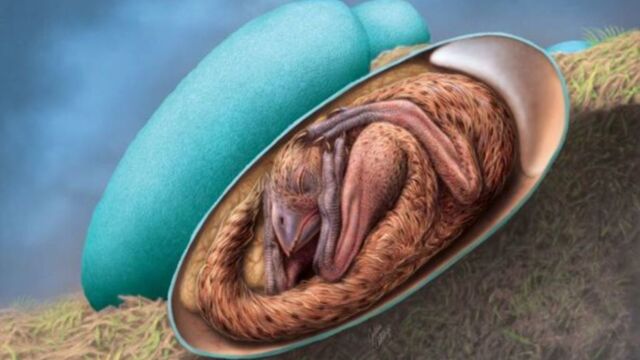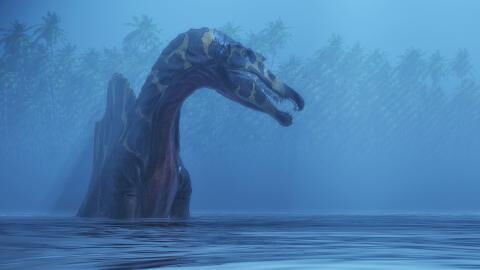Scientists have discovered a perfectly preserved baby dinosaur curled up inside its egg, ready for hatching. The discovery of this unprecedented fossilized egg could offer some explanation on the links between dinosaurs and birds.
Discover our latest podcast
Of Birds And Dinosaurs
The embryo was discovered in Ganzhou in southern China and has been named Baby Yingliang - the name of the Chinese museum which houses the fossil.
Researchers estimate it is at least 66 million years old. In research published in iScience on Tuesday, the scientists said, analysis of the specimen shows it to be either a toothless theropod dinosaur, or oviraptorosaur.
Fion Waisum Ma, joint first author and PhD researcher at the University of Birmingham, said in a statement:
Dinosaur embryos are some of the rarest fossils and most of them are incomplete with the bones dislocated. We are very excited about the discovery of 'Baby Yingliang' - it is preserved in a great condition and helps us answer a lot of questions about dinosaur growth and reproduction with it.
The discovery is particular important because it offers researchers a better understanding of the link between and modern birds.
The curled position of the embryo in the fossilized egg is known as ‘tucking’ and is common in birds shortly before they hatch. Dr. Ma said:
It is interesting to see this dinosaur embryo and a chicken embryo pose in a similar way inside the egg, which possibly indicates similar prehatching behaviours.
Lucky Find
The egg is around 7 inches long, and the dinosaur was estimated to be 11 inches long from head to tail. The researchers from China, the UK and Canada believe had it lived, Baby Yingliang would have been about two to three meters long.
Darla Zelenitsky, an associate professor in the department of geoscience at the University of Calgary in Canada, said to CNN in an email:
It is an amazing specimen ... I have been working on dinosaur eggs for 25 years and have yet to see anything like it. Up until now, little has been known of what was going on inside a dinosaur's egg prior to hatching, as there are so few embryonic skeletons, particularly those that are complete and preserved in a life pose.
The egg was first uncovered in 2000, but put into storage for 10 years at the Yingliang Stone Nature History Museum in China.















